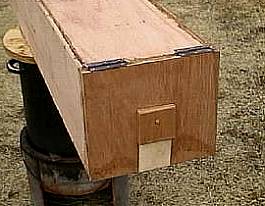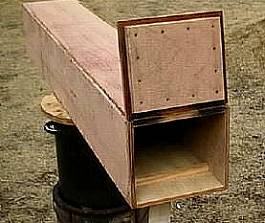Steam bending
Steam bending is a woodworking technique where strips of wood are steam heated using a steam box. The applied heat and moisture makes it easy enough to bend the wood around a mould to create a shape. The moulding process is usually done putting the strips of wood in to a former, with the strips of wood often reinforced on the outside with a metal band to prevent the machine blowing out. Some examples of where you would use steam bending would be in the production of lacrosse sticks, violins and in manufactured wood furniture such as the Windsor chair. Steam bending can also be used to make big things such as the wood frame of a boat hull and lap boards.
Steam bending is also a low energy and economical method of manipulating wood. It doesn't need the expense or drying time of glues to join together several wood pieces to make the desired shape. Steam bending also leaves lower levels of scrap since a smaller piece can bent into shape instead of cutting the desired shape away from larger stock.Steam bending is limited in how much you can actually bend the wood without it breaking, especially for thick wood. Not all species of wood steam-bend well and problems can be that it weakens the wood slightly and can leave residual stresses which may cause breakage or spring-back over time.

After the wood has been steamed, it is to be taken out of the steam box and then placed straight into a former/jig. This is because the wood will contain a lot of moisture after steaming and will be easy to bend. If you put clamps on the jig with the steamed wood in it, it normally expels the moisture quicker and lets it dry faster. After you put it into the jig you clamp it together and wait until it dries. When you take it out it should have taken the shape of the jig. To help it dry faster you can also put it in a kiln to get rid of the moisture in the wood, you can use a variety of controls from temperature to air flow to get rid of some of the moisture and keep the desired amount of moisture in it.



No comments:
Post a Comment